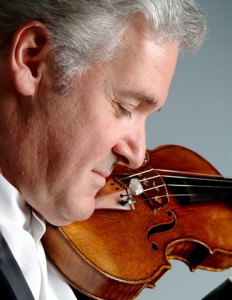Prominent dance companies from France have been presented by Le French May in recent years including the Ballet Preljocaj and the Bordeaux Ballet. This year’s major visiting dance company was the Nice Mediterranee Opera Ballet performing the two-act ballet “Marco Polo” choreographed by Luciano Cannito in 2010.
This French troupe was founded in 1947 as Nice Opera Ballet, but was renamed as the Nice Mediterranee Opera Ballet in 2009 after the arrival of former Paris Opera Ballet star Eric Vu-An as its artistic director. “Marco Polo” was one of the creations commissioned by Vu-An. It’s based on Italo Calvino’s 1972 novel “Invisible Cities”, which is about the famous Venetian explorer invited to the palace of Kublai Khan to recount his recent extensive travels.
The ballet explores the conflict between both famous historical figures – one who is the ruler of a vast empire, and the other a travelling troubadour. The two men who are polar opposites discuss about their visions of the world. But their meetings gradually become acrimonious, because the traveller’s souvenirs from all round the world remind the powerful ruler of his limitations as a mortal.
Canito unfortunately has tried to cram too much of the story into the ballet. It’s extremely difficult to follow for someone who has not read the actual novel by Calvino. And the programme notes are on the brief side. The ballet commences predictably with Marco Polo’s arrival in the throne room of Kublai Khan’s palace. His duets with Kublai Khan are the main thread of the ballet. The ballet ends with Polo’s escape from the palace, and the emperor examining again the souvenirs from Polo’s travel bag.
Overall, Cannito’s choreography is quite satisfying. Polo’s solos are full of athletic jumps, while the solos for the various female soloists are effective too. The duets between Kublai Khan and Polo are full of tension. However these duets do not link so well dramatically with the other sections of the ballet.
Canito’s choreography for the corps de ballet dances is suitably vivacious and lively. Particularly enjoyable is the opening episode in Act 2 named in the programme as “Chloe, City of Theatre”. It depicts a carnival in the central town square with plenty of exotic Eastern characters including a puppet. And there is a dominant female soloist clad in black who presumably represents Chloe. This is followed by an episode set in Kublai Khan’s palace where the emperor is dancing with his favourite red-clad concubine. The choreography reminds me of the Dunhuang folk dancing.
Earlier in Act 1, there is an exciting dervish dance for four men. But some episodes are more confusing. There’s a section entitled “Zobeide” with the dancers attired in tights, while the lighting evokes moonlight. It’s incomprehensible why there is suddenly an abstract modern dance episode out of nowhere.
To be fair, this ballet did show off the 30-strong Nice Mediterranee troupe pretty well. In the title role, Alessio Passaquindici was elegant and technically dazzling. As for the Kublai Khan, it’s a bonus to see Vu-An in the role. He extracted every nuance in his characterisation of the tyrant. The company’s supporting performances were strong and solid. The costumes and lighting designs by Jean-Pierre Laporte were outstanding.
本網站內一切內容之版權均屬國際演藝評論家協會(香港分會)及原作者所有,未經本會及/或原作者書面同意,不得轉載。









